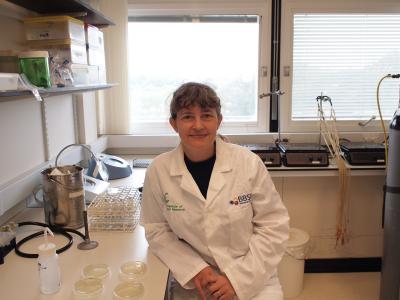Though it makes microbiologists gasp in horror, sous vide ("under vacuum") cooking - which uses lower temperatures with claims it improves food quality - is all the rage in food circles now.
But it's unclear what the risks are. Advocates of it have history on their side; preserving and cooking food in leaves, fat, salt and animal bladders before being cooked is as ancient as cooking. And isolating food from air, such as vacuum sealing, can arrest the decay of food.
To help figure it out, the Institute of Food Research (IFR) has been undertaking research for the Food Standards Agency to establish if sous vide cooking is safe. Sous vide cooking involves vacuum packing food in a plastic pouch and then heating in a water bath. Chefs are attracted to the precise nature of the temperature control, saying they can create new textures and flavors by manipulating the behavior of food components such as proteins, starches and fats.
On the other side of that is microbial safety. Data has been collected on how well food poisoning bacteria grow and survive in different foods at different temperatures and made available through ComBase, a Biotechnology and Biological Science Research Council-supported National Capability based at IFR.
Hopefully chefs, and especially home cooks are interested in microbial growth information but whether they are or not, there is an increase in the number of sous vide foods being cooked at lower temperatures, e.g. 42°C to 70°C. Most data on microbial growth in food is based on temperatures below 40°C, with studies focusing on how bacteria grow at ambient temperatures, for example during storage. Other studies have looked at the temperatures at which bacteria are killed, usually around 55-60°C and above.
Lack of information in the range of about 40 to 60°C makes it very difficult for cooks, manufacturers, regulators and enforcement officers such to calculate the lethality of such low temperature heat treatments and judge the risk of foods containing pathogens.
To address this issue Dr Sandra Stringer and colleagues at the IFR have gathered the information needed to properly assess the hazards associated with lower temperature cooking. The scientists also carried out a feasibility study on extending models in the 'Combase Predictor' database.

Dr. Sandra Stringer, Institute of Food Research. Credit: IFR
Specifically they investigated how much work would be needed to upgrade the ComBase database to model the hazards E. coli, Salmonella and L. monocytogenes between around 40 and 60°C. This would help ensure that the safety assessment for sous vide foods is consistent, effective and commensurate with any risk to public health.
Stay tuned.






Comments